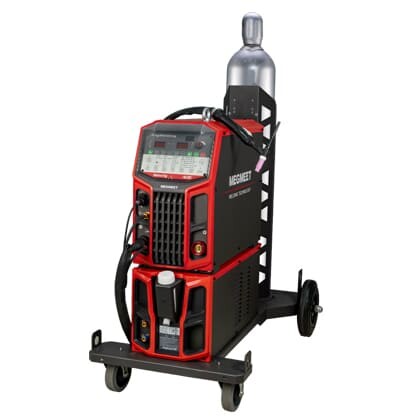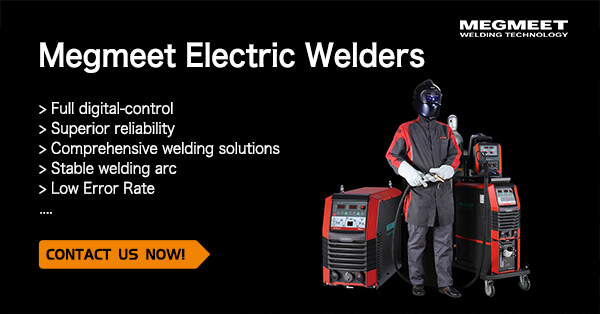TIG welding, or tungsten inert gas welding, continues to be a cornerstone method for crafting high-precision, clean joints across a wide spectrum of metals and materials. This technique employs a non-consumable tungsten electrode to create an arc, enabling welders to produce refined and aesthetically superior welds with minimal post-processing.
The dominant shielding gas remains argon, prized for its stability and inert properties, although advanced welding applications now often utilize optimized gas blends—such as helium mixtures—to enhance heat input, penetration, and weld quality for specific metals. Such variations help welders tailor the process for diverse materials and thicknesses, aligning with industry demands for efficiency and superior results.
Unlike many fusion welding techniques, TIG welding traditionally doesn’t require filler material, as it involves melting the base metals to form a joint. However, manual feed-in of filler rods is also common, giving welders the flexibility to control the deposition precisely—particularly valuable in complex, thin or delicate work.
The design of the TIG torch differs significantly from MIG and other welding guns, allowing greater versatilities in application. Its adaptability makes TIG welding suitable for precision tasks in industries demanding exacting standards, such as aerospace, medical device manufacturing, and high-end custom fabrication.

I. Industries and Modern Applications for TIG Welding
Today, TIG welding remains indispensable across many sectors. With the evolution of power sources, both DC and AC TIG welding are widely employed, each offering unique benefits. DC is favored for ferrous metals, providing deep penetration and stable arcs, while AC excels with nonferrous metals like aluminum and magnesium by effectively breaking up oxide layers for solid welds.
In the current manufacturing landscape, TIG welding is extensively used in aerospace, automotive restoration, bicycle construction, medical equipment, and even in emerging sectors like electronic device fabrication. Its ability to produce superbly clean, smooth welds makes it ideal for thin metals, intricate assemblies, and projects where aesthetics and precision are critical.
The technique’s compatibility with a wide array of metals—including nickel alloys, copper, stainless steel, and innovative materials like titanium and zirconium—demonstrates its ongoing relevance. Recently, there's also increased interest in TIG welding for lightweight, mobile fabrication units, enabling on-site repairs and bespoke manufacturing with minimal environmental impact.
II. Why TIG Welding Is Still a Leading Choice: Advantages
Modern TIG welding continues to garner favor due to its unmatched precision, control, and versatility. Some key advantages include:
Superior Weld Quality: Produces clean, defect-free joints with minimal slag or spatter, resulting in a professional-grade finish.
Versatility with Materials: Capable of welding various metals, including exotic alloys, with tailored shielding gases such as argon-helium mixes—enhancing heat input or weld penetration.
Eco-Friendly Operation: Utilizes inert gases, especially argon, which are safe and environmentally benign compared to other welding methods.
Exceptional Control: Customizable amperage allows for meticulous control over heat input, reducing warping and distortion, especially on delicate or thin materials.
All-Position Welding: Suitable for horizontal, vertical, overhead, or upside-down welding, which is vital in complex fabrication tasks.
High-Quality Aesthetic Finishes: Ideal for projects requiring smooth, visually appealing welds, making it a favorite in artistic and high-end fabrication.
Wide Material Compatibility: From aluminum and stainless steel to precious metals like gold and platinum, TIG offers unmatched flexibility.
Safer and Cleaner Process: Fewer fumes, smoke, and contaminants contribute to safer working conditions, aligning with industry trends toward healthier environments.
Cost-Effective Gas Consumption: Primarily using argon, TIG welding reduces filler and shielding gas expenses, especially with recent innovations in gas delivery systems.
These factors keep TIG welding at the forefront of precision manufacturing, custom prototyping, and repair applications, particularly where quality cannot be compromised.
III. Current Challenges and Limitations of TIG Welding
Despite its many benefits, TIG welding also faces certain constraints that users must consider:
Slower Process Speed: TIG welding is inherently slower than MIG or automated methods, which may impact productivity on large-scale projects.
High Initial Investment: Buying advanced, reliable TIG equipment can be costly, though ongoing operational costs tend to be moderate.
Intense Arc Light: The bright arc pose risks for eye safety; proper PPE and shielding are essential during prolonged use.
Skill-Intensive Technique: Requires highly skilled operators; mastering torch manipulation and filler feeding demands training and experience.
Gas Coverage Sensitivity: Effective shielding depends on proper gas flow; inadequate coverage can lead to weld contamination or porosity.
Slower Process Speed: TIG welding is inherently slower than MIG or automated methods, which may impact productivity on large-scale projects.
Polarity Knowledge: Operators must understand the importance of proper polarity (DC or AC) settings to optimize weld quality for different materials.
Equipment and Material Costs: High-quality TIG power supplies and consumables represent a significant investment, and variability among suppliers can affect results.
Considering these factors, many industries now recognize TIG welding as a skill-intensive process that demands proper training, high-quality equipment, and attention to detail for optimal outcomes.
IV. Finding the Right TIG Welding Equipment for Your Needs
In today’s dynamic fabrication environment, access to advanced TIG welding technology is more crucial than ever. Whether you’re working in a small-scale artisan workshop or managing a large manufacturing plant, partnering with knowledgeable suppliers like Megmeet Welding Technology ensures you stay ahead.
Our extensive inventory features the latest in TIG welding machines, along with complementary equipment such as automated systems, multi-process welders, and cutting-edge safety solutions. With expert guidance, you can select cost-effective, energy-efficient systems tailored to your project scope—be it delicate repairs or complex, multi-station production.
At Megmeet, we’re dedicated to advancing your welding capabilities with innovative machinery and comprehensive support, helping you meet today’s industry standards and tomorrow’s challenges. If you want to buy Megmeet MetaTIG ACDC welding machines or MetaTIG DC welding machines, you can contact Megmeet Welding Technology.

Related articles
1. Automatic Welding Machine Basics You Must Know
2. Automatic Welding Effects in Industrial Manufacturing
3. Drum Brake Shoes Automatic Welding - Using Ehave CM500H MIG/MAG Welder
4. Megmeet - Pioneering Chinese Welding Machines for Precision and Automation
5. Robots & Cobots Revolutionizing Welding Automation





